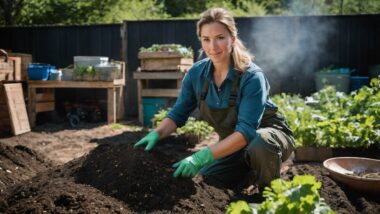We all know the feeling of looking at a brimming rubbish bin and wondering, where will it all go? Surprisingly, an average person generates nearly 2 kilograms of waste daily—that's a lot of trash! This article is your guide to taking on the challenge with three simple actions: reduce, reuse and recycle.
Dive in – we're about to make a world of difference, one less piece of garbage at a time.
Key Takeaways
- Cutting down on waste is crucial for protecting our environment. You can start by choosing products with less packaging, using reusable items like bags and bottles, and fixing things instead of binning them.
- Reuse extends the life of products and reduces landfill growth. Repair items, donate to charity shops, or find new uses for household goods to embrace sustainability.
- Recycling makes new from old, saving resources and energy. Learn what you can recycle in your area, use recycling bins correctly, and support companies that create products from recycled materials.
- Every small action towards reducing, reusing, and recycling can lead to significant positive changes for the health of our planet.
- Junk removal companies play a vital role in the 3 R's strategy by sorting out recyclable materials and ensuring they are either reused or turned into new products.
Importance of 3 Rs for Protecting the Environment
Understanding the importance of Reduce, Reuse, and Recycle — or ‘the 3 Rs' — is akin to grasping a lifeline for our planet. These simple yet powerful practices stand as pillars in our collective quest to curb environmental degradation, offering clear paths towards preserving the world's delicate ecosystems for future generations.
Global warming, pollution, and diminishing forests
Global warming is heating up our planet. It's caused by too many gases like carbon dioxide trapping heat from the sun. Trees usually help because they take in carbon dioxide and give out oxygen.
But we're losing forests fast, which means more carbon dioxide stays in the air.
Pollution is another big problem for Earth. It comes from chemicals, plastics, and other waste that aren't disposed of properly. This stuff can harm plants, animals, and people too.
Water gets dirty, the air becomes hard to breathe and land can't grow healthy crops. All this mess can make us sick and hurt wildlife.
Using less stuff means less waste; it's as simple as that. When you choose a reusable bag over a plastic one or fix things instead of throwing them away, it really does make a difference! Every small action adds up to big changes for our planet's health.

Impact of waste on air, water, land, animals, plants, and humans
Waste thrown away carelessly pollutes the air we breathe. It releases harmful chemicals and greenhouse gases that worsen global warming. When trash piles up, it burns and this sends poisons into the sky.
This dirty air can make us cough or struggle to breathe.
Rubbish in our oceans and rivers threatens the creatures living there. Fish swallow tiny plastic bits, mistaking them for food. On land, animals get trapped in waste or eat harmful litter by accident.
Plants also suffer when waste covers the soil they grow from—it blocks sunlight and good stuff like water from getting through.
People feel the sting of waste pollution too. Landfills near homes can lead to sickness as bad smells fill the air and chemicals seep into drinking water sources. Kids playing outside might touch dangerous junk without knowing it's unsafe.
Clean-ups cost lots of money, so reducing rubbish is key for towns everywhere to save cash—and look after everyone's health better!
How the concept of the “circular economy” fits into the 3Rs
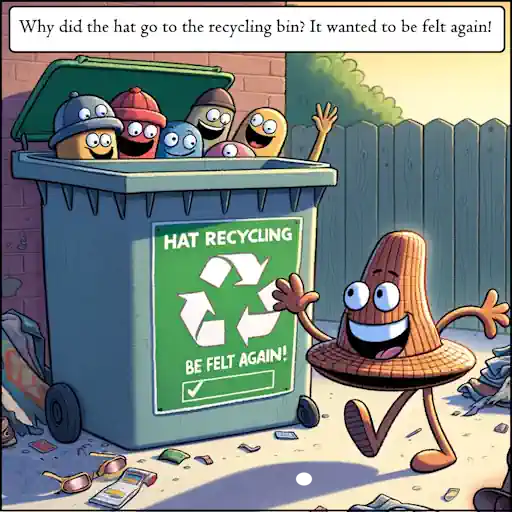 Seeing the damage waste does to our world, it's clear we need a better plan. That's where the circular economy slides perfectly into the 3Rs of reduce, reuse, and recycle. This smart system is all about making things last longer and cutting down on trash.
Seeing the damage waste does to our world, it's clear we need a better plan. That's where the circular economy slides perfectly into the 3Rs of reduce, reuse, and recycle. This smart system is all about making things last longer and cutting down on trash.
It pushes us to stop making so much new stuff by using what we already have again and again.
In this looped approach, every product gets a second chance—or even more! We start by cutting down on what we use (reduce). Then, find ways to give items a new life instead of throwing them away (reuse).
Finally, turn old products into new ones (recycle). Together these steps keep materials in play for as long as possible. It’s like giving Earth a helping hand by not wasting its precious resources.
3 Rs and the waste hierarchy
The 3 Rs stand at the heart of the waste hierarchy, a system that prioritises actions to manage waste. This pyramid ranks waste management strategies from most to least environmentally friendly.
It starts with reducing waste – buying and using less stuff will mean throwing away less. Next up is reusing – finding new ways to use old things instead of tossing them out. And lastly, recycling – turning used materials into new products.
Imagine you have an empty water bottle. Instead of dumping it in the bin, think reduce: do I need a single-use bottle next time? Maybe not! Reuse comes next: could someone else find a good use for this bottle? Perhaps fill it with water for plants or as a homemade bird feeder! If reuse isn't an option, recycle it so that plastic can live on as something useful again, like recycled material for clothing or park benches.
By following this order – reduce, then reuse, then recycle – we minimise our environmental footprint and help protect our planet's future.
The 3 R's Strategy to reduce our impact on the environment
Embracing the 3 R's strategy—Reduce, Reuse, Recycle—is a direct ticket to doing our bit for Mother Earth; delve into how these simple yet powerful actions can significantly lighten our environmental footprint.

Reduce (or minimize)
To protect our planet, we need to start with reducing what we use. Cutting down on waste is the first step in the 3 Rs strategy.
- Choose products that come with less packaging.
- Pick items that last longer and won't break easily.
- Share tools and equipment with friends instead of buying new ones.
- Opt for digital over physical items, like e – books or online tickets.
- Mend clothes and fix gadgets rather than throwing them away.
- Say no to disposable items like plastic cutlery and paper napkins.
- Plan your meals to avoid food waste.
- Use reusable bags, bottles, and containers every day.
- Cut back on car travel; walk, bike or use public transport when possible.
- Save energy by turning off lights when you leave a room.
Reuse
Moving from reducing waste, let's talk about reuse and how it keeps items out of landfills. Reusing products can save money and lower pollution. Here are ways we can reuse everyday items:
- Fix broken things instead of tossing them. Repairing a cracked mug or stitching up a torn bag gives new life to our belongings.
- Share what you don't need. Pass on clothes you've outgrown to friends or donate them to charity shops.
- Choose cloth bags for shopping. They're strong and can be used many times, unlike single – use plastic bags.
 Pack lunches in reusable containers. This cuts down on the disposables like cling film and paper tissues.
Pack lunches in reusable containers. This cuts down on the disposables like cling film and paper tissues.- Give old furniture a new look. Sanding and painting an old chair can make it stylish again.
- Refill jars and bottles at bulk stores. Fill them with rice, pasta, or cleaning supplies instead of buying new packaging.
- Use tech until it stops working. Keep using phones, laptops, and cameras as long as they do the job.
- Borrow tools instead of buying them. Sharing a lawn mower or drill with neighbours saves resources.
- Recycling companies play a part by finding new uses for materials that could have been wasted.
- Junk removal firms sort out items they can sell again or pass on for recycling.
- Plastic boxes once holding takeout food become storage for leftovers.
- Glass jam jars turn into holders for candles or homemade jams.
Recycle
Recycling turns old products into new ones. It helps cut down on waste and protects our environment.
- Understand recycling: Know what can be recycled, like paper towels, toilet paper, and drink cans. Learn how your town's recycling program works.
- Use recycling bins: Put items like milk cartons and beverage bottles in the right bins. This makes it easier to recycle properly.
- Teach others: Share your knowledge of recyclables with friends and family. Encourage them to recycle too.
- Think before you throw: Ask yourself if something can be recycled instead of thrown away.
- Buy recycled products: Choose items made from recycled materials. Look for things like recycled paper bags or toilet paper.
- Avoid single-use items: Replace disposable items with reusable ones where you can.
- Support eco-friendly companies: Pick brands that use sustainable packaging or are committed to recycling.
Reduce
Cutting down on what we consume is the cornerstone of environmental stewardship—adopting a ‘less is more' ethos, if you will. It's not merely about being frugal; it’s an active choice with ripple effects that benefit our planet and pave the way towards sustainable living practices.

Ways to reduce waste
- Buy smart: Choose items with less packaging. Look for products that last longer and don't come wrapped in layers of plastic or cardboard.
- Travel wisely: Use your car less often. Walk, bike, use public transport, or car-share whenever possible to cut down on pollution and save resources.
- Compost your scraps: Start composting at home. Turn food waste into nutrient-rich soil rather than dumping it in the bin.
- Switch off: Save energy by turning off lights and taps when you're not using them. This simple act reduces electricity and water waste.
- Light up efficiently: Replace old light bulbs with energy-efficient ones. They use less power and need changing less often.
- Get creative with leftovers: Cook only what you need, and get inventive with any leftovers to prevent food from being thrown away.
- Repair and refurbish: Instead of buying new, fix what's broken or give it a fresh look. This habit cuts down on waste and can be a fun project.
- Drink from reusable bottles: Ditch single-use water bottles. Keep a reusable one handy – it’s better for the environment and your wallet.
- Manage electronic waste: Recycle e-waste like old phones and batteries responsibly through certified recyclers. It prevents toxic substances from harming the earth.
- Donate what you don't need: Before throwing things out, see if someone else might find them useful. Give clothes, books, and toys to charity shops or local shelters.
Benefits of reducing
A family sorts waste together using the 3 Rs to help the environment..Cutting down on waste does more than just clear up space in our bins. It directly impacts the world around us. Fewer materials are needed when we reduce them, which means less mining and logging.
This preserves natural habitats and reduces pollution from factories.
Using less energy is another big win. Making new stuff often requires a lot of power, usually from fossil fuels that harm the atmosphere. By using less, we burn fewer of these fuels and help fight climate change.
Less stuff also leads to fewer items ending up as litter or in landfills where they can leak harmful chemicals into the soil and water. Communities benefit too – cleaner spaces are nicer to live in! Plus, saving resources now means there's more for future generations to use.
Remembering to cut back doesn’t just make you a friend to trees or oceans; it makes a better tomorrow for everyone.
Examples of reducing waste
Reducing waste not only helps the environment but also saves money. Here are ways to make a big difference with small changes.
- Choose products with less packaging. This means fewer materials go into landfills.
- Bring your own bags to grocery stores. You'll cut down on plastic waste.
- Say no to disposable water bottles. Use a reusable one instead.
- Avoid single-use items like straws and cutlery. Opt for durable versions you can wash and reuse.
- Shop for second-hand clothes rather than buying new ones. It reduces clothing production demand.
- Repair broken items when possible. Fixing things extends their life and prevents waste.
- Go for digital receipts over paper ones. This step cuts down on paper use.
- Print double-sided or not at all. Save trees by using less paper in school or at work.
- Turn off lights and taps when not in use. This conserves energy and water, leading to less resource waste.
- Use cloth napkins instead of paper ones. They're washable and reduce the need for paper products.
- Share tools and appliances with neighbours. It lowers the number of items that each person needs to buy.
- Prepare meals using microwave dinners sparingly, opting for fresh ingredients that require minimal packaging.
- Donate old electronics for refurbishing rather than throwing them away.
- Eat more plant-based meals; it takes fewer resources to grow plants than to raise animals.
Reuse
Embracing the art of reuse is like giving items a second chance to shine; it's all about creativity and resourcefulness in extending the life cycle of products. Rather than tossing things away after their first use, we discover innovative methods to repurpose them, supporting sustainability while curbing our contribution to landfill growth.
Methods of reusing products
Reusing products helps cut down on waste. It also makes the most of what we've already got. Here are some top ways to keep items in use longer:
- Repair damaged goods instead of throwing them away. A broken chair can often be fixed with a few tools and some know-how.
- Donate items you don't need to charity shops. This gives your old clothes or books a new life with someone else.
- Swap disposable bags for cloth grocery ones. They last much longer and you can use them again and again.
- Save metal cans and plastic containers for storage. They're perfect for keeping nuts, bolts, or even crafts tidy.
- Choose reusable plastic containers over single-use ones for packing lunches or storing leftovers.
- Get creative with pallets; they can turn into furniture, garden planters or art projects.
- Take toner cartridges from your printer back to the store for a refill rather than buying new ones each time.
- Look out for reusable packaging when shopping; it reduces the amount of materials that get thrown away.
Role of recycling companies in reusing and recycling
Recycling companies are hard at work turning old items into new treasures. They sort out things that we throw away and figure out which ones can live another life. These experts repair broken stuff, making it as good as new whenever possible.
Often, they'll give still-useful items to charities so others can use them.
These companies also have big machines that chew up materials like plastic and paper. After breaking them down, they turn these bits into brand-new products. This magic process keeps a ton of waste from ending up in landfills every year.
Plus, it means fewer trees get cut down since we don't always need fresh wood pulp for paper or cardboard boxes!
Role of junk removal companies in reusing and recycling
Junk removal companies take the baton from recycling companies, pushing the reuse and recycling race even further. They collect stuff that people don't want anymore, things like old furniture, electronics, and clothes.
Instead of just dumping everything in landfills, they sort it out. Some items get repaired and are given a second chance at life. These revived products might go to local charities or community centers where they can help others.
These eco-friendly businesses do more than just pass on goods; they also dive into the world of recycling materials. They break down what they've collected and find ways to turn them into something new.
This could be shredding up textiles for industrial rags or crushing glass to make sand for construction projects. By finding new uses for old materials, junk removal companies help cut down on waste and save resources — making a big difference for our planet!
Examples of reuse
Reusing items is not just good for the planet, it also saves money. Let's explore how everyday objects can be given a new life instead of being thrown away.
- Repairing damaged goods: If a chair leg breaks or a jumper gets a hole, fix them rather than toss them out. It extends the item's life and keeps it from becoming waste.
- Donating to charity: Giving away clothes, toys, and books you no longer need helps others and reduces waste. Local charity shops are always looking for items they can sell on.
- Cloth grocery bags: Swap out plastic bags for cloth ones when shopping. Reusable bags cut down on plastic waste and can be used over and over again.
- Metal and plastic containers: After finishing with a jar of jam or a tin of coffee, wash them out and use them to store other foods or small items around the house.
- Reusable lunch bags: Instead of single-use packaging for your sandwich, opt for a reusable lunch bag. It's better for the environment and more stylish too!
- Reusable plastic containers: Store leftovers in these instead of wrapping food in cling film. They keep food fresh and reduce the amount of plastic you use.

Recycling
Recycling transforms yesterday's waste into tomorrow's resources, creating a cycle of materials that supports a greener planet. It's not just about paper and plastic—think car batteries turned into new ones, or old corrugated packaging finding a second life in your latest online shopping delivery.
Process of making new products out of old products
Recycling turns old items into new treasures. First, we collect and sort materials like paper, plastic, and metal. Next, these go to a recycling center where they are cleaned and processed.
In factories, they get broken down into raw materials. For example, old paper becomes pulp which can make new paper towels or toilet rolls.
This process saves resources and cuts pollution from making new products. It keeps useful things out of landfills too. Many everyday items come from recycled materials – beverage bottles become carpeting; car batteries turn into lamp posts; milk cartons transform into picnic tables.
This way, we give waste a second life!
Examples of recycled products
Recycled products help save our planet. They turn old items into new ones without needing more raw materials. Here's a look at some common examples:
- Paper towels: After recycling, used paper turns into new towels for cleaning up spills.
- Toilet paper: Recycled office papers often find a second life as the rolls we use in bathrooms.
- Paper bags: Your paper grocery bag might have been a school notebook in its past life.
- Beverage bottles and cans: Empty soda cans and water bottles get melted down and reshaped for another round of drinks. Manufacturers say that 90% or more is recycled that way.
- Milk cartons: Once you've finished your milk, the carton can become part of a new cardboard box, when returned to a specialist recycling company able to separate the card from the plastic layer.
- Newspapers: Today's news can wrap tomorrow's gifts thanks to recycling. paper is mashed up with water cleaned and filtered to make new paper products.
- Glass jars and bottles: Used glass containers go through a heating process to make fresh jars for your jams and sauces.
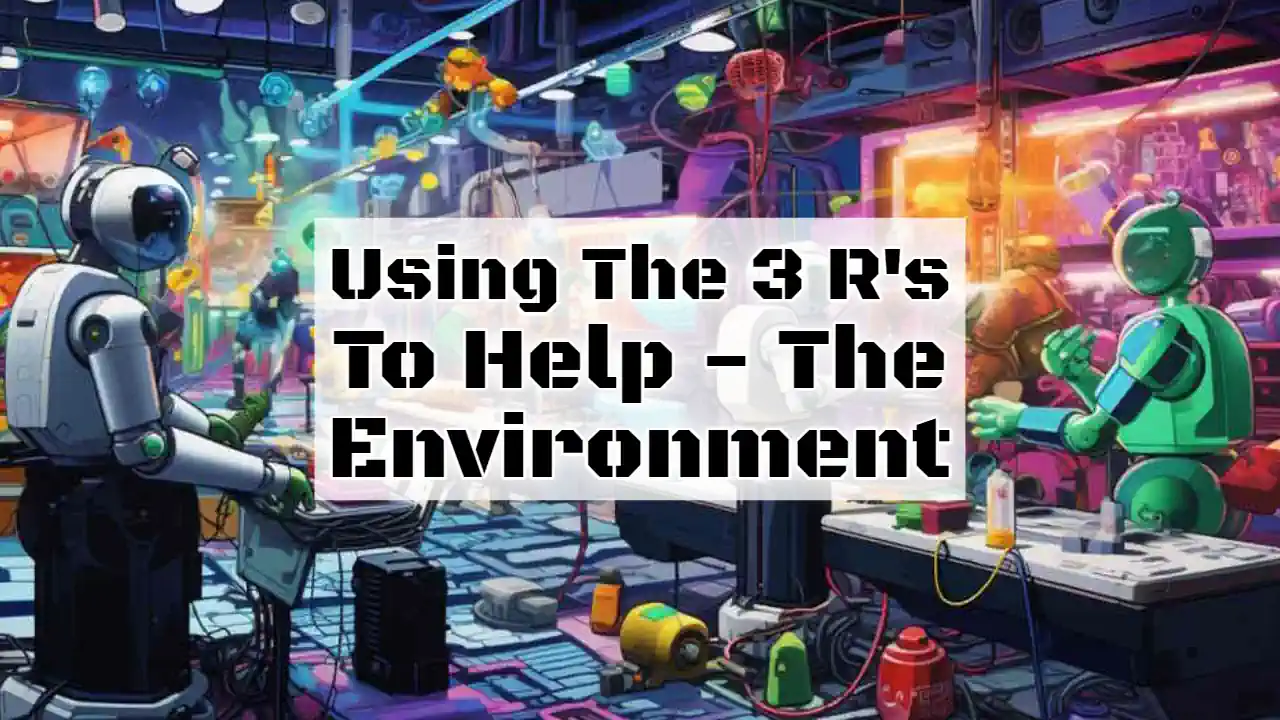
Conclusion
As we draw this discussion to a close, ponder the profound ripple effect your individual actions can have through embracing the 3 Rs—each step towards reducing, reusing, and recycling casts a stone that creates waves of positive change for our beloved planet.
It's not just about waste management; it's about crafting a legacy of environmental stewardship that benefits us all, echoing far into the future.
Participate in the 3Rs program!
Joining the 3Rs programme is so easy and yet it can make a big difference for our planet. All you need to do is to make sure that you take the time to:
- think about the 3Rs next time you throw things away!
- either throw into the correct bins provided for recycling by your local council, or
- donate items to charities that can make use of your old items and
- participate in one of the brand-new deposit return programs that supermarkets and other retailers will soon be offering.
You'll become part of a larger movement to cut down on waste and protect nature. It's about choosing to reduce, reuse, and recycle every day.
Consider everything we discard, including paper cups and printer cartridges. By practicing the 3 Rs, you give these items new life. Junk removal companies are stepping up too; they sort out what can be reused or recycled instead of just dumping everything.
Schools and businesses are getting involved as well, aiming for net-zero carbon emissions by finding eco-friendly ways to manage waste.
Every little action counts, like saying no to that extra plastic bag or fixing an old backpack rather than buying a new one. Recycling becomes second nature – rinse out that jar and toss it into the recycling bin! Doing this at home, school or work unites us in building greener communities together.
Benefits to the environment and community
Getting involved in the 3Rs program does wonders for our planet and neighborhoods. Less trash ends up in landfills because we're cutting down on what we throw away. This means cleaner air to breathe and fewer harmful chemicals seeping into our soil and water sources.
Recycling turns old stuff into new treasures, reducing the need for raw materials. That saves forests and wildlife habitats from being destroyed.
Communities also come together when they focus on recycling, reusing, and reducing waste. Junk removal companies play a big role here—they make sure items that can get a second life don't go to waste.
As people see less litter around their streets and parks, they feel proud of their cleaner surroundings. These actions spark conversations about going green, which leads to broader environmental action within communities.
The positive changes lead us towards a greener economy where everyone benefits—people today and generations to come!
Role of environmentally conscious companies like junk removal companies
Junk removal companies play a big part in reducing waste that ends up in landfills. They sort out junk and make sure to salvage what can be reused or recycled. This effort helps cut down on harmful waste dumping and pollution.
These businesses are leading by example, showing how we all can help the environment by being mindful of our rubbish.
They face the challenge of handling all sorts of items, from old furniture to inkjet cartridges. By finding new homes for things that still work or turning materials into something new through recycling, they prevent useful resources from going to waste.
Their actions support the circular economy and encourage others to think about the environmental impact of their own waste.
FAQs
1. What exactly are the 3 R's in environmental protection?
The 3 R's stand for reduce, reuse, and recycle. They represent the ways we can cut down on waste to protect our environment. By reducing what we use, reusing items instead of throwing them away, and recycling waste into new products, we make a big difference.
2. Can you show me how to apply the 3 R's in my daily life with examples?
Sure! To reduce waste, bring your own bags when shopping; use a water bottle instead of buying plastic ones; and turn off lights when not needed. For reuse, upcycle old jars as storage containers or give old clothes new life through DIY projects. And recycle by sorting out paper, glass and plastics for collection—simple actions that go a long way!
3. Why is it important to follow these practices, like reduce, reuse, and recycle?
Following these practices reduces pollution from disposal processes like burning rubbish, which harms our air quality. Think less smog! It also helps ease deforestation since fewer trees get chopped down for packaging materials. Plus, embracing a green economy can lead to more sustainable living overall.
4. Are there any specific standards for recyclable products like packaging materials?
Yes indeed! Standards such as ASTM D6866 and ASTM D6400 ensure that certain recyclable products break down safely during composting, without polluting the earth. These rules help us know if things like bioplastics will decompose properly rather than hanging around for years and causing harm.
5. How does cutting back on consumerism impact the environment positively?
Toning down consumerism means making fewer goods, which leads to using up less natural resources—say goodbye to unnecessary polystyrene packing peanuts!
This act alone lowers greenhouse gas emissions because producing stuff usually involves creating pollution somewhere along the supply chain.


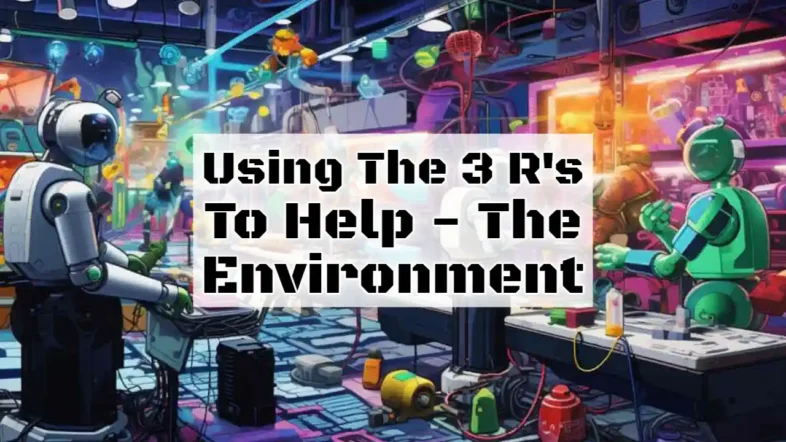
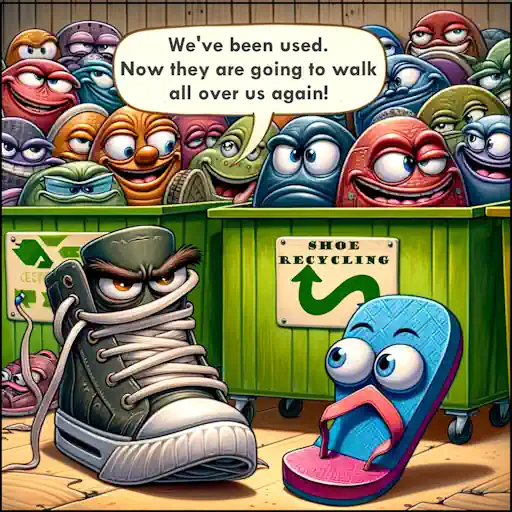 Pack lunches in reusable containers. This cuts down on the disposables like cling film and paper tissues.
Pack lunches in reusable containers. This cuts down on the disposables like cling film and paper tissues.